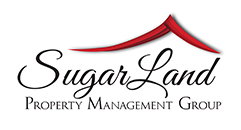_1.png)
Property Condition Visits: Why They Matter for Tenant-Occupied Properties
When a property is occupied by tenants, regular communication and maintenance are key to protecting the home’s value and ensuring a positive rental experience for everyone involved. One important — but often overlooked — part of the process is the property condition visit.
So what exactly is a property condition visit? Why does it matter? And how can you conduct one respectfully and effectively?
Let’s break it down.
🏠 What Is a Property Condition Visit?
A property condition visit (also known as a mid-lease inspection or routine property check) is a scheduled walk-through of a rental property while it's occupied by a tenant. The goal isn’t to invade privacy — it’s to ensure the home is being maintained, to identify potential issues early, and to stay ahead of costly repairs.
These visits are not the same as move-in or move-out inspections. They happen during the lease term, usually every 6 months to a year, depending on the lease agreement and local laws.
✅ Why They’re Important
For Landlords/Property Managers:
Protect the property: Catch signs of damage, leaks, pest issues, or unauthorized pets or occupants early.
Prevent expensive repairs: Small issues (like a slow leak) can become major headaches if left unchecked.
Maintain good tenant relations: Shows tenants that you care about the property and their living conditions.
Ensure lease compliance: Without being intrusive, a visit helps confirm that lease terms are being followed.
For Tenants:
Opportunity to report issues: Tenants may notice things that need attention but haven’t reported them yet.
Improved communication: Property visits open the door for conversations about maintenance, comfort, or safety concerns.
Shows landlord accountability: A landlord who checks in responsibly is more likely to take care of the home long-term.
🔒 Respecting Privacy & Following the Law
It’s important to approach these visits professionally and legally:
Give proper notice — Most states require 24–48 hours’ written notice before entering a tenant-occupied property. Check your local laws.
Schedule at a convenient time — Coordinate with the tenant. Be flexible and courteous.
Limit the scope — Stick to visible areas and avoid going through personal belongings.
Document with care — Take notes or photos (with permission) of the property’s condition, especially areas needing repair.
Remember: The goal is not to snoop — it's to preserve the condition of the home and keep everyone safe and happy.
🛠 What to Look for During the Visit
Here’s a general checklist for a condition visit:
Signs of leaks (under sinks, ceilings, around toilets)
Mold or water damage
Smoke detector and HVAC filter checks
Condition of floors, walls, and doors
Cleanliness and general upkeep
Unauthorized pets or occupants
Exterior concerns (roof, lawn, siding, drainage)
📆 How Often Should You Conduct Property Condition Visits?
This depends on your lease agreement and property management practices. Common approaches:
Annually – A single check-up during a long-term lease
Biannually – Helps keep an eye on things without being overbearing
Quarterly (rare, and should be communicated clearly in advance to avoid tenant discomfort)
The key is consistency — and respect.
Final Thoughts
Property condition visits are a win-win when handled with professionalism and transparency. They protect your investment, help avoid costly repairs, and foster trust between landlord and tenant.
When everyone’s on the same page, these visits become less of an inconvenience and more of a routine part of responsible property management.
Whether you're a landlord, property manager, or tenant — open communication, fair notice, and a shared goal of maintaining a safe, livable space can make all the difference.


.png)
_1.png)
_1.jpg)
_1.jpeg)

_1.png)
_1.png)
.png)
_1.png)



